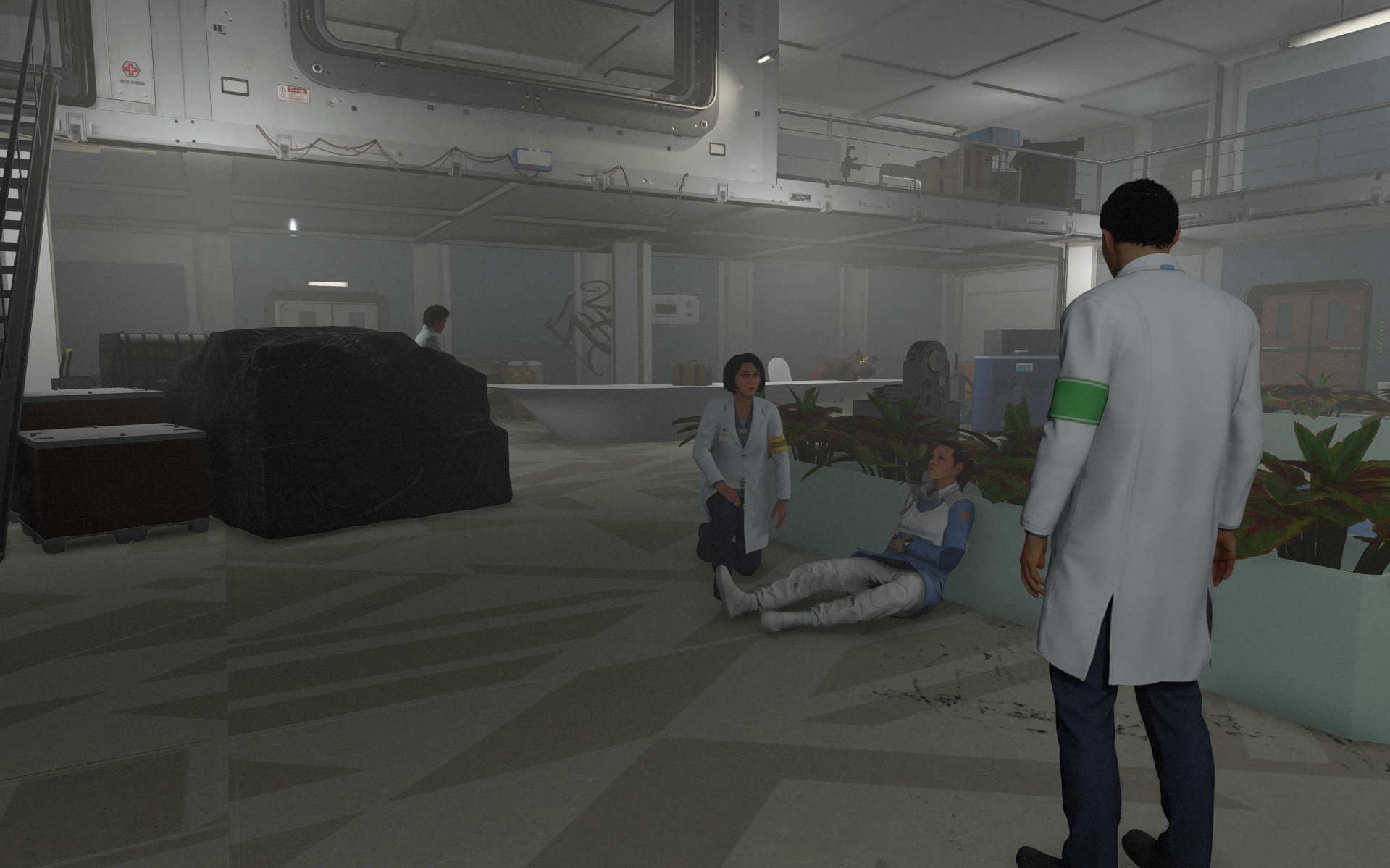
Doctor’s Orders - Starfield: Creation Kit
Trailer
Details
“Doctor’s Orders” is a single-player mod developed for Starfield. In this quest, the player is asked to help a research station as it is being ravanged by the pirates. The player learns more about Ambrosia, the medicine the research lab is making. Players will discover what secrets the research lab truly holds and is forced to make a decision for the fate of the lab.
Team Size: 1 Developer
Software: Starfield: Creation Kit
Development Time: 315 Hours / ~4 Months
Level Focus: Quest Design, Level Design
Design Goals
Environmental Storytelling
Exploration & Impact
Choice Balance & Conditional Storytelling
Exploration & Impact
I wanted to highlight exploration and the impact that has on the narrative. The player can ask the quest giver more about the medicine Corrin Research Lab is developing. Later in the quest, the player speaks to Dr. Fenring and has the option to ask more.
Here shown is the NPC, Dr. Fenring. Fenring is surprised the player knows about Ambrosia and gives more specific information since the player already has a base understanding.
Environmental Storytelling
Another goal was telling as much story through the environment and help the overall design. I wanted the research station to feel like it was taken over by the Crimson Fleet. This room shows what it was used for while also pointing the player to the NPC they talk to.
Dead doctors and researchers can be found in almost every room and medical supplies are readily available throughout the interior. For this room, the player is drawn to the data slate which the NPC was “dragged” away from.
Choice Balance & Conditional Storytelling
Creating a level with a diverging choice towards the end sets a large goal for this level. Depending on the choice the player makes, there can be:
More hospital beds filled with sick patients,
More people waiting in line to check in, and
Previously met NPC’s can still be there or have passed because of the illness.
Post-Mortem
What went well?
Finding a tile set from the get-go Whitebox for the interior and exterior saved me a lot of time searching, altering, and changing any placeholder walls and ceilings in later milestones.
Focusing on one aspect of the project to hone in on at the very beginning. Choosing quests to develop and understand made sure my quest didn’t break through development.
Taking feedback and iterating quickly from playtester feedback.
Had a strong foundation early on so got feedback early to change and pivot where needed.
I struggled when it came to enemy NPC’s leveling and their timing. Spending more time on the death counter to make it where when half of the enemies are dead, then the next wave appears would have made the function much better.
I had to keep adding to my interior as I developed the narrative, which took time away from iterating. Having a better idea of scope and what is feasible now after working in the engine will definitely improve the pipeline and ideation phase.
What needs improvement?
What did I learn?
I learned how to develop for open-world levels, taking into account different player levels, entrance and exit points in a level
How to create dialogue trees and various NPC’s and altering both as needed
Having pinch points, narratively and literally, is crucial for pacing a good quest.
Having local landmarks to orient the player is vital for the player to remember where they are.









